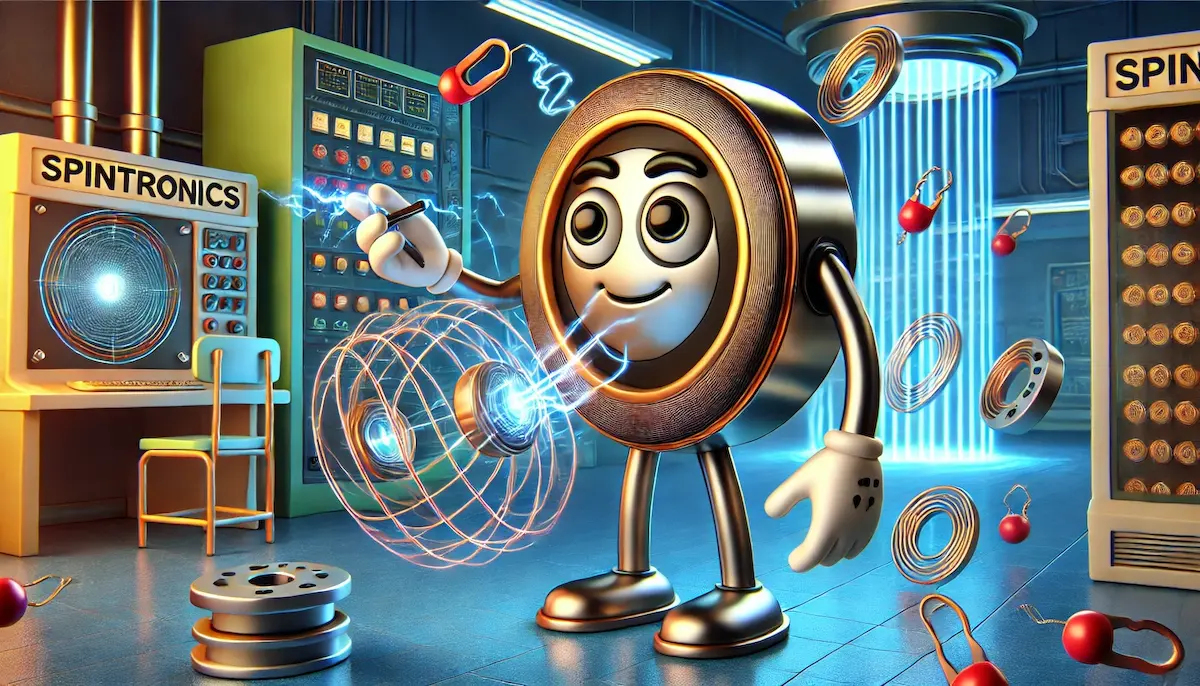Spintronics, short for spin electronics, is an innovative field of technology that leverages the intrinsic spin of electrons, in addition to their charge, for information processing and storage. This approach offers significant advantages over traditional electronics, including enhanced data storage capacity, faster processing speeds, and reduced power consumption. As a result, spintronics holds great promise for the future of computing and electronic devices.
What Is Spintronics?
Traditional electronic devices rely on the movement of electrons’ charge to perform operations. Spintronics, however, utilizes another fundamental property of electrons—their spin. Electron spin can be thought of as a tiny magnetic moment, which can be oriented in one of two directions: up or down. By manipulating these spin states, spintronic devices can process and store information in novel ways.
Key Concepts
Electron Spin
Electron spin is a quantum property that gives electrons their magnetic moment. In spintronics, the spin of electrons is used to represent binary data: spin-up and spin-down states correspond to the 0s and 1s used in digital computing.
Spin Polarization
Spin polarization refers to the degree to which the spins of electrons in a material are aligned in a particular direction. High spin polarization is crucial for the efficient operation of spintronic devices, as it allows for the selective control and manipulation of electron spins.
Magnetic Tunnel Junctions (MTJs)
MTJs are a core component of many spintronic devices. An MTJ consists of two ferromagnetic layers separated by a thin insulating layer. The resistance of the junction changes depending on the relative alignment of the magnetizations in the ferromagnetic layers, which can be controlled by the spin of the electrons. This property is used to read and write data in spintronic memory devices.
Applications of Spintronics
Data Storage
One of the most significant applications of spintronics is in data storage, particularly in the development of magnetoresistive random-access memory (MRAM). MRAM uses magnetic states to store data, offering non-volatility (data retention without power), high speed, and durability. Unlike traditional RAM, MRAM does not lose data when the power is turned off, making it an ideal candidate for future memory technologies.
Logic Devices
Spintronic logic devices use electron spin to perform logical operations. These devices have the potential to be faster and more energy-efficient than their traditional electronic counterparts. Spin-based transistors and logic gates could revolutionize computing by enabling more complex and powerful processors with lower power consumption.
Quantum Computing
Spintronics also plays a role in the development of quantum computing. Quantum bits, or qubits, can be realized using the spin states of electrons or other particles. These spin-based qubits can be manipulated to perform quantum computations, which hold the promise of solving complex problems much faster than classical computers.
Advantages of Spintronics
Non-Volatility
Spintronic memory devices like MRAM retain data even when power is turned off. This non-volatility offers significant advantages for data integrity and energy savings, especially in applications where data preservation is critical.
Speed and Efficiency
Spintronic devices can operate at higher speeds and with greater efficiency compared to traditional electronic devices. The ability to manipulate electron spins quickly and with minimal energy loss leads to faster data processing and lower power consumption.
Durability
Spintronic devices are less prone to wear and degradation over time, as they rely on magnetic properties rather than electrical charge movement. This makes them more durable and reliable, particularly in harsh environments.
Challenges and Future Directions
Material Science
The development of spintronic devices requires advanced materials with high spin polarization and robust magnetic properties. Research is ongoing to discover and optimize such materials, including exploring novel compounds and nanostructures.
Integration with Existing Technology
Integrating spintronic components with existing semiconductor technology poses a significant challenge. Hybrid systems that combine traditional electronics with spintronics are being developed to leverage the strengths of both approaches, but seamless integration remains a complex task.
Scalability
Scaling spintronic devices for mass production and commercial use is another major challenge. Researchers are working on techniques to manufacture spintronic components at scale while maintaining their performance and reliability.
Conclusion
Spintronics represents a fascinating and promising frontier in the evolution of electronic devices. By harnessing the power of electron spin, this technology offers significant advantages in data storage, processing speed, and energy efficiency. While there are challenges to overcome, ongoing research and development are paving the way for spintronics to become a mainstream technology. As it matures, spintronics has the potential to revolutionize computing and electronics, driving innovation and progress in various industries.
Blockfine thanks you for reading and hopes you found this article helpful.
